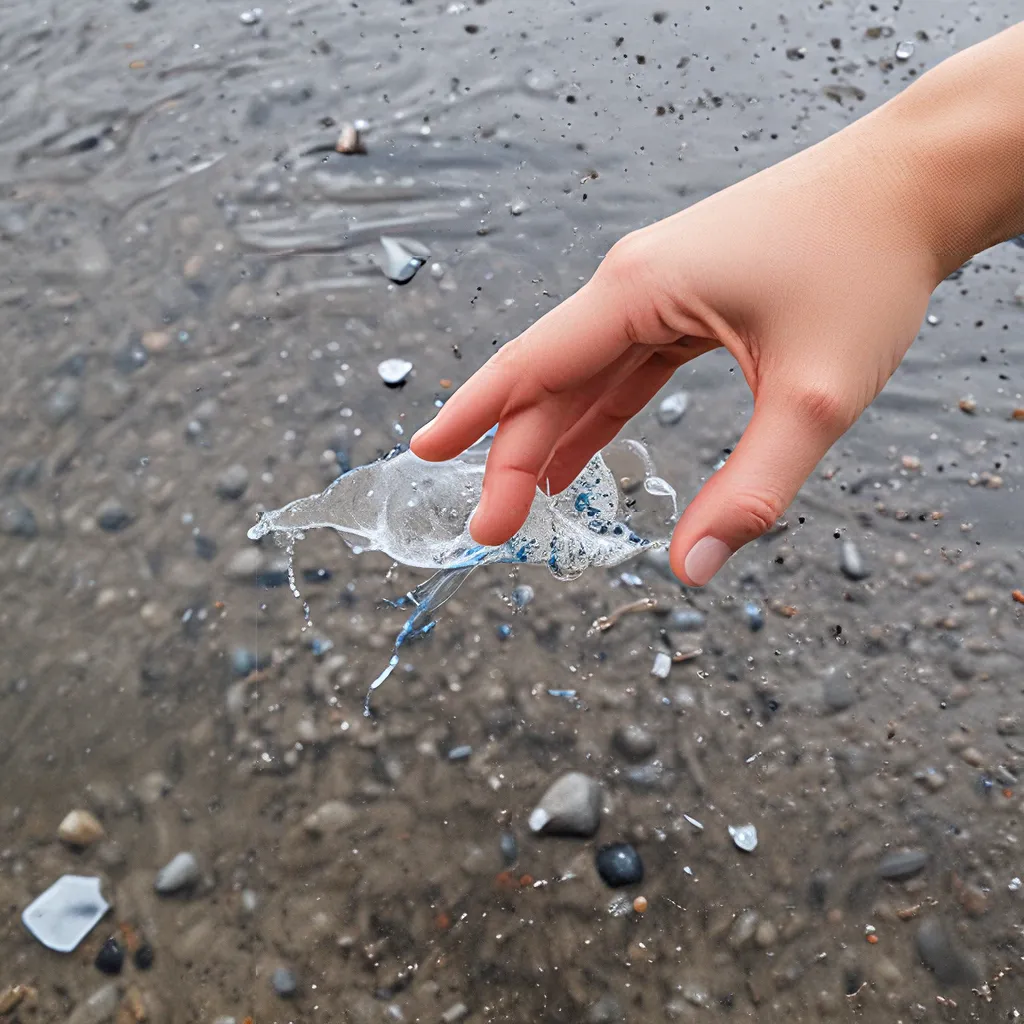
Uncovering the Hidden Menace: Understanding Microplastics in Wastewater
As I delve into the world of wastewater treatment, I can’t help but be both fascinated and concerned by the growing threat of microplastics. These tiny, insidious particles are now ubiquitous in our water systems, and their impact on the environment and human health is a pressing issue that demands our attention.
Imagine, if you will, a future where we could effectively identify and mitigate these microscopic pollutants, restoring the purity of our waterways and safeguarding the health of our communities. That’s precisely the challenge we’re tackling head-on, and I’m excited to share with you the innovative strategies and technologies that are leading the charge.
Microplastics: The Invisible Intruders
Let’s start by understanding the scope of the problem. Microplastics are defined as plastic particles less than 5 millimeters in size, and they can come from a variety of sources, including the breakdown of larger plastic items, as well as from the shedding of synthetic fabrics and the wear and tear of tires. These minuscule particles make their way into our waterways, often evading traditional wastewater treatment processes and posing a significant threat to aquatic ecosystems and, ultimately, human health.
Recent studies have revealed that about six in 10 people worldwide lack access to proper sanitation, which means that these microplastics and other pollutants are often discharged directly into the environment, wreaking havoc on fragile ecosystems. This is a global issue that requires a multifaceted approach to address.
Innovative Identification Strategies
The first step in tackling the microplastics problem is to develop reliable methods for identifying and quantifying these elusive particles. Researchers are continuously pushing the boundaries of what’s possible, exploring innovative techniques that can accurately detect and analyze microplastics in wastewater samples.
One such approach involves the use of advanced spectroscopic techniques, such as Raman or Fourier-transform infrared (FTIR) spectroscopy, which can provide detailed information about the chemical composition and size distribution of microplastics. These methods have the potential to revolutionize our understanding of the problem, allowing us to pinpoint the sources and track the movement of these pollutants through the water cycle.
Mitigation Strategies: From Nature-Based Solutions to Circular Economy
While identification is crucial, the real challenge lies in developing effective mitigation strategies to address the microplastics crisis. Fortunately, there’s a growing arsenal of innovative solutions that hold the promise of a cleaner, more sustainable future.
One promising approach is the use of nature-based solutions, such as constructed wetlands and green infrastructure. These systems can leverage the power of natural processes to filter out microplastics and other contaminants, while also providing additional benefits like flood mitigation and habitat creation. As Riccardo Zennaro, a wastewater expert with the United Nations Environment Programme (UNEP), explains, “Constructed wetlands for example are often affordable, operable, and reliable, and can be operated at small or large scales depending on need and can be adapted to urban or rural environments.”
But the real game-changer may lie in the circular economy approach, where we strive to capture, transform, and reuse all waste. This revolutionary concept recognizes that the nutrients and resources contained within wastewater, including nitrogen, phosphorus, and even water, can be recovered and repurposed, rather than being discarded as waste.
Leading companies in the wastewater treatment industry are already exploring innovative technologies that can extract these valuable resources, transforming them into fertilizers, biofuels, and other useful products. By closing the loop on our waste streams, we can not only mitigate the impact of microplastics but also contribute to a more sustainable and resilient future.
The Power of Collaboration and Public Engagement
As with any complex challenge, tackling the microplastics crisis in wastewater requires a collaborative effort involving various stakeholders, from policymakers and researchers to community groups and industry leaders.
Stephanie Wear, a senior scientist and strategy adviser at The Nature Conservancy, emphasizes the importance of public engagement, stating, “What I’ve learned from the work that we do is how much we forget to think about human behavior in all of this. Behavior is as much a part of the solution as the technology. You have to get people to use it. You have to get people to want it.”
By fostering open dialogues and educating the public on the significance of this issue, we can build the momentum needed to drive meaningful change. After all, when people understand the gravity of the situation and the potential for positive impact, they’re more likely to become active participants in the solution.
The Road Ahead: Embracing Uncertainty and Staying Adaptable
As I reflect on the journey ahead, I’m reminded that tackling the microplastics problem in wastewater is not a straightforward task. There are still many unknowns, and the scientific community is continuously uncovering new insights that challenge our understanding of this complex issue.
But that’s precisely what makes this work so exciting. We’re on the cusp of groundbreaking discoveries, and by embracing the uncertainty and staying adaptable, we can navigate these uncharted waters and uncover innovative solutions that will transform the way we manage our wastewater systems.
So, let’s embark on this journey together, with a spirit of curiosity, collaboration, and a steadfast commitment to creating a cleaner, more sustainable future. The road ahead may be winding, but the destination is worth the effort – a world where microplastics are a thing of the past, and our waterways are teeming with life and vitality.